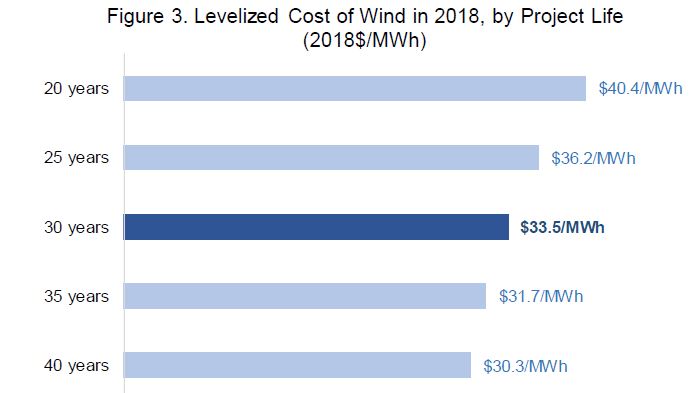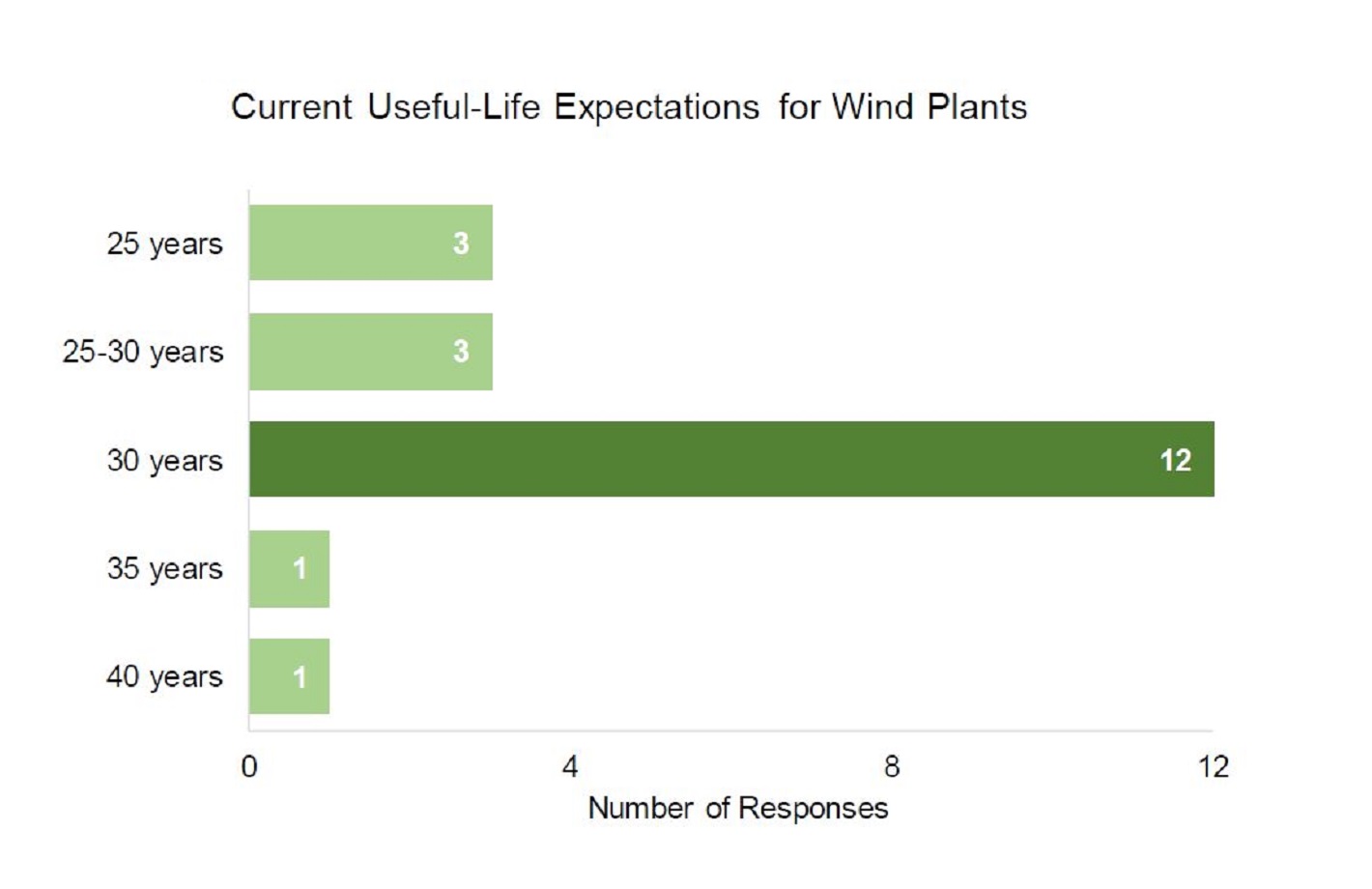The useful life of wind farms continues to increase.
When I started working on the first wind projects in the 2000s, the ‘standard’ useful life was 20 years.
Now it is not uncommon to see projects with a useful life of 30 or 35 years, and it seems that in some cases it is up to 40 years.
In this very interesting paper by Berkeley Labs, the subject is discussed in detail (click to download):
You will find that the useful life of a wind farm in the US is about 30 years. I would say that in Europe the situation is similar.
One of the most relevant consequences is a decrease in the levelised cost of energy (LCOE).
A project that has a useful life of 20 years and an LCOE around $40/MWh improves rapidly from $36/MWh for a useful life of 25 years to around $33/MWh if we reach 30 years.

Obviously in these calculations we consider everything else to remain constant: no change in operations and maintenance (O&M) expenditures or project performance over time.
Perhaps the “no extra O&M costs” assumption is somehow unrealistic: some components, such as gearboxes, wear out quickly.
Many developers are therefore working on parks with a longer expected life: but what happens to projects in operation?
Some operators may have problems extending the useful life (e.g. because the land lease agreements were designed for 20 years, or because the permits include the lifetime of the infrastructure).
Other operators, on the other hand, will have the luxury of being able to decide which is the most cost-effective solution: extending the useful life, opting for repowering with new, more powerful turbines or simply dismantling the wind farm.

Leave a Reply